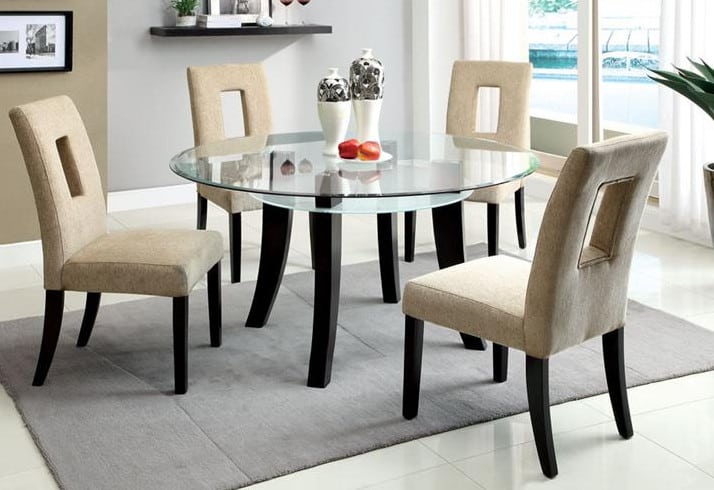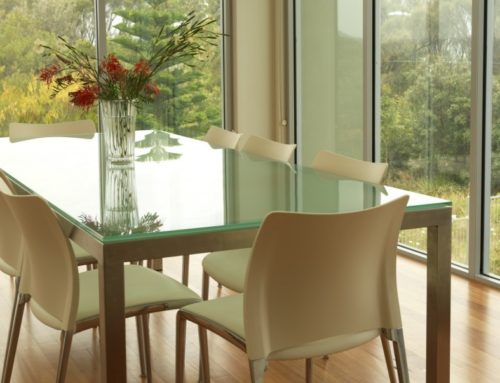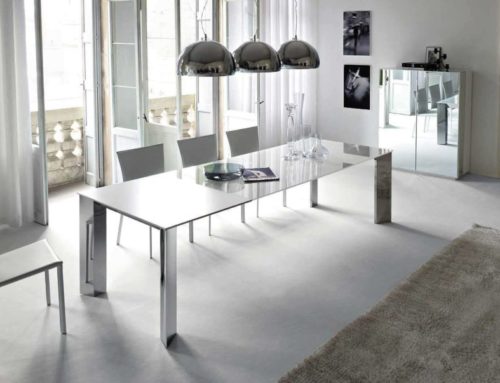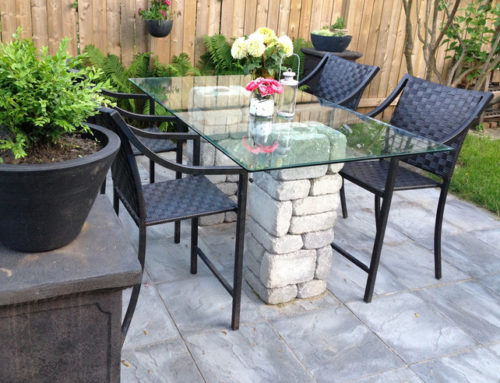Table of Contents

What is the best glass thickness for my tabletop?
The thickness of glass will depend on your table. If you will be using the glass as a cover, then go for a ¼ inch thick glass. If you will be using the glass as a table surface, then you should go for thicker glass based on the table’s size.
In case the glass top will be used for supporting heavy items, or it is bigger than 24 inches, then choose any thickness more than ¼ inch.
Choosing between ¼, ½, and 3/8 inches mainly depends on personal preference. Thicker glass will obviously feel and look more substantial but its weight might become a concern after exceeding a certain thickness. Thicker glass becomes heavier with increasing size.
Standard glass thicknesses include:
3/6 inch- This thickness is ideal for small tables, table covers, inserts, and patio tables.
¼ inches- This is ideal for table tops and protective covers for tables.
3/8 inch- This is deal for an unsupported and heavy table top where glass is used as the sole table top.
½ inch- This thickness is the most attractive and strongest thickness available and it’s ideal for unsupported and heavy tops where the only tabletop is glass.
What are heavy glass tabletops?
These are glass tops that are ½ or 3/8 inch thick. This glass is suitable for large table tops like the ones used for patio and dining tables.
They are more durable and stronger than those with lesser thickness. Hence, they are an ideal choice for larger tables that hold heavy items such as heavy dishes.
If you want to have a frameless glass top for your patio or dining table, and the glass will be resting on the table legs directly, then you should go for heavy glass for ultra strength, safety, and durability.
Do I require using tempered for my table top?
It is recommended to use tempered glass for extra strength. This type of glass is at least five to seven times harder than annealed regular glass. It is also known as safety type of glass since in case it is hit, it breaks into little pebbles that are not dangerous like broken shards of annealed glass.
In most cases, ½ inch glass isn’t tempered when manufacturing. This is because ½ inch glass is already strong due to its thickness. However, 3/8 and ¼ inch is usually tempered to enhance its strength.
It is good to note that tempering glass doesn’t change its weight or appearance. In case you have safety concerns or have children at home, then have your glass tempered.
Why type of edges should I have for glass table covers or tops?
At Majestic Glass, we have four types of glass edging for table tops and table covers. The kind of edging to choose will mainly depend on the use of the table. Some basic edge types include:
- Seamed Edge: This eliminates sharpness for safe handling. In seamed edging, glass edges are dulled by sanding them after cutting glass to size. If you want the glass to have a frame or where its edges will not be visible, then go for seamed edge glass.
- Flat Edge: This type of edge is polished and resembles a square shape. The glass is polished to get a smooth and shiny finish after cutting into size. This edge is ideal for people who want minimalistic looks on their table top and where you want the glass edges to be visible.
- Pencil Edge: This type of edging resembles a round polished edge. The edges have a rounded and smooth, shiny finish.
- Beveled Edge: This is a sloped, straight edge, typically 1 to ½ inch slope. To get this edging, glass is cut to size and the edges are polished to form a specific beveled width at an angle. The customer specifies the bevel width and the most common width is 1 inch, but it can also range from ¼ inch to one inch.
How will I measure the table before ordering a glass top?
Check for some screws and the supports beneath the table. Start with measuring from the inner side of the supports at the top. Measure the width and length.
Then multiply the width and the length to get the tabletop’s area. Arrange for a minimum ¼ inch depth, which may change based on the kind of glass to be installed.
How will I measure a table with round corners?
If you want to get a table cover for your round table, then you will want it to match with your table. For a rounded table, measure its radius. Take a ruler or tape measure and line it to the outermost table edge.
The distance you will get from this edge to the other outermost edge across the round table will give you the radius of the table. This measurement will assist you to order for a cover that will match your rounded table.
How will I measure a table that has clipped corners?
You should take measurements of the angle of a clipped table corners to ensure that the ordered table cover will match with your table. Line up a ruler or tape measure from the outermost angled edge.
The distance you will get from this specific point to the start of the 45 degrees angle edge is the table’s clipped corner measurement. You will use this measurement to order a matching cover.
How will I prevent my glass table from getting cracked?
No matter how thick a glass top is, it can still crack. For instance, placing an extremely hot item on the glass may cause it to break. Glass is not an efficient heat conductor.
Hence, one side of the glass will heat and expand more than the other surface. It will start cooling in an uneven manner and this will make it crack.
You can avoid this by putting a thick trivet beneath hot pans, pits, and dishes when serving meals on your dining table. By doing this, your glass will be protected from cracking as a result of heat.
Which is the most appropriate cleaner for mirrors and glass?
There are several good brands available in the market. You can even make a cleaning solution at home. You will simply mix 2/3 of water with 1/3 of white vinegar.
Use a lint-free cloth or paper towel when cleaning and drying glass surfaces to ensure no streaks are left behind. A crumpled newspaper will also do the job.
For more information, visit our page on glass table tops here.




